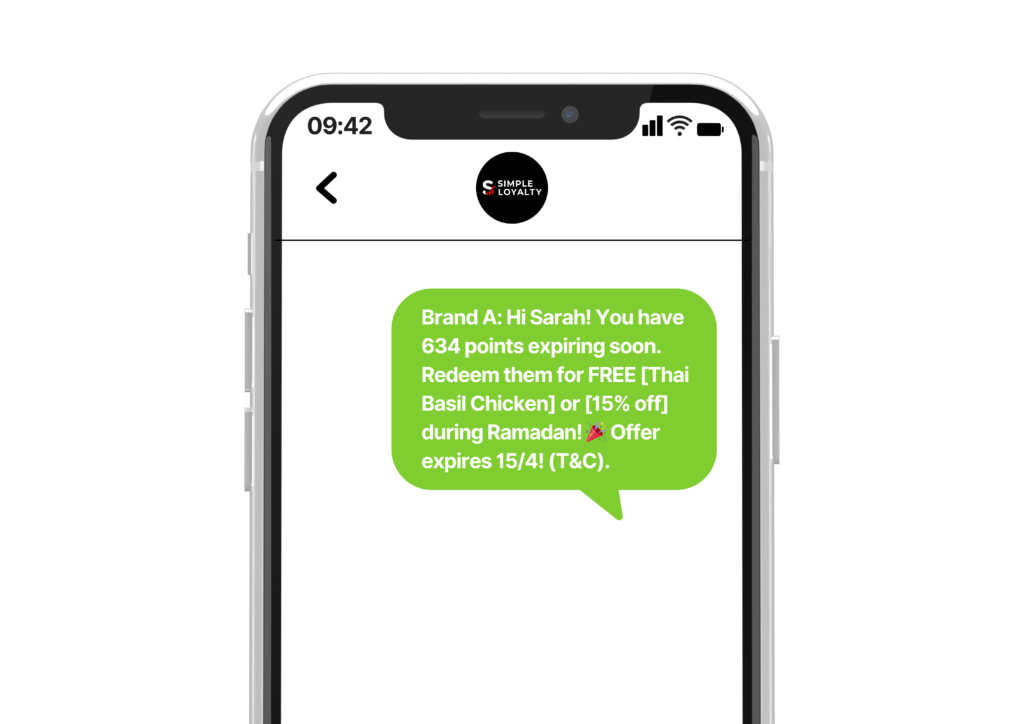
Imagine this: you’ve spent hours crafting the perfect SMS promo to fill seats on a slow Tuesday, but during the lunch rush, you forget to hit “send”–and those empty tables cost you hundreds. Or worse: Sarah, your tiramisu-loving regular, just dined elsewhere on her birthday–because you forgot to send her the free dessert promo. By 2AM, you’re slumped over your phone, manually texting discounts to a half-outdated contact list.
This chaos isn’t just exhausting—it’s costing you sales, loyalty, and sanity. This is where marketing automation can help pick up the slack.
On average, marketing automation helps businesses drive sales up to a 14.5% increase and a 12.2% reduction in operating costs. This means that while manual marketing ≠ efficiency, automated marketing = productivity. In this case, lower overhead doesn’t mean less profit. How is that possible?
In this article, we’ll take a look at the benefits of marketing automation for restaurants and how you can use them.
What is Marketing Automation?
Basically, marketing automation is when technology automates marketing processes, allowing you to skip all the repetitive tasks, like sending emails to customers one by one, replacing chores with hands-off solutions.
At its best, automated marketing can do more than perform monotonous tasks for you, it can also target specific customers and nurture them with personalized content. By taking human error off the table, marketing automation is the benchmark of a fast-growing restaurant.
Why You Should Automate Marketing For Your Restaurant
1. Big Time Saver
When you have a restaurant open 7 days a week, with multiple staff members and shifts, sometimes things slip your mind. That’s where automated marketing can do wonders. Marketing automation can save upwards of 6 hours per week, increasing efficiency and labor productivity.
What to do: Automate repetitive tasks like hitting send on individual emails or text campaigns. With an automated system, you and your team are free to do more immediate work!
Automation can also help in managing consistent and timely engagement with customers. For example, you can set it up so that email campaigns are automatically sent to a customer’s inbox after they’ve submitted a Google Review. On busy days, that’s one less thing that you have to micromanage.
2. Ideal for Small Teams
If you’re working with a small team to manage your restaurant, you have even more reason to let marketing automation do all the busywork. You can’t afford to have an extra pair of hands copy-pasting text campaigns, not when you have limited employees.
45% of small businesses use marketing automation tools. They allow smaller restaurants to compete with established chains, reducing chores and making room for staff to take in more customer volume.
3. Easy Segmentation
Different types of people eat at restaurants. That means you’ll have customers with different preferences, vegetarians searching for salads, or someone who’s on a diet.
What to do: Use marketing automation to segment each customer’s behavior based on their purchase history, and then you can seamlessly engage with each group through your preferred channels. Automation can send unique and relevant content that’ll be sure to catch people’s attention!
This also helps when you’re differentiating your marketing strategy from high-spending customers and newcomers. All of it is streamlined for your easy day to day management.
4. Personalized Engagement
When every customer segment has a targeted marketing campaign, it allows for greater personalization, making each customer feel valued and boosting their engagement.
Email open rates are 70.5% higher after using marketing automation. This is because customers are more interested in content that applies to them.
What to do: If a parent only visits your restaurant with their children, you can utilize that dynamic to create a deeper customer relationship. How? By making sure the marketing they receive is family-oriented like buy 1 get 1 free bundles. The good news is that all of that work is automated! From the data collection to the promo in their inbox.
5. Earn More by Spending Less
If you’re worried that marketing automation sounds too good to be true, that there must be an absurd price for it, don’t be. In the long run, it’s far cheaper than paying for more staff to do routine admin.
Small businesses with marketing automation see a 12% decrease in overhead costs. With annual savings piling up from reduced labor, the profit far outweighs the initial cost. Your return on investment is all but guaranteed!
6. Improve Customer Retention
So, you’ve noticed a customer visiting your restaurant less frequently. Automated marketing can deal with that too! A campaign can be sent across multiple channels to win back customers with personalized rewards and exclusive offers.
What to do: If you want to re-engage with your lapsed diners, you can set it so that after a certain period of time, seasonal promos automatically activate to attract inactive customers based on their previous preferences. That way, you don’t have to worry about customer retention; your automated marketing can reach out by itself.
7. Enhance Loyalty Programs
More than a tool for direct marketing, automation can also assist in enhancing loyalty program features. It can track customer spending, point accumulation and notify them when passing milestones to encourage redemptions.
What to do: When you have new menu items you want more customers to try, you can automate upsell opportunities in your rewards program. The campaign can automatically offer double points if customers purchase higher-value items. This can increase the overall value of your menu and increase revenue.
Types of Marketing Automation You Could Run
Now that you know the benefits of marketing automation, let’s look at the features and what you can use to increase customer loyalty.
1. Automated email campaigns
Example: Any time a new customer enrolls in your loyalty program, a welcome email can be automatically sent to their inbox, or if your system detects that a customer has been inactive for a while, it can send an automated email that promotes personalized offers for re-engagement.
2. Automated SMS campaigns
Example: Not everyone reads all the emails in their inbox. It’s also possible that the campaign gets lost in a different tab. If that’s the case, text message is the most effective way to reach customers instantly. You can remind customers of limited-time promos that offer double loyalty points, encouraging them to spend more and win big.
3. Pre-scheduled campaigns
Example: You want to set up a campaign for a holiday, maybe New Year’s Eve. You expect your restaurant to be hectic, so you pre-schedule it weeks or months before the day. Without the need for human input, the campaign will activate at your set time. You don’t need to check your calendar or wait for the right time to start it.
4. CRM integration
Example: You want to activate two different marketing campaigns, one for frequent but low spending customers, the other for infrequent but high spending customers. Integration makes this possible! First by allowing your large customer database to be used in identifying demographics. Then by using that data to automatically assign the right campaigns to each customer segment.
How SimpleLoyalty’s Automated Marketing Impacts Restaurants
Still wondering how exactly automated marketing gets results? We’ve got you covered! Here are a couple of real cases where SimpleLoyalty utilized marketing automation to benefit restaurants.
Re-engaging customers with automated point reminders
Challenge: A popular Thai restaurant in Kuala Lumpur noticed that many loyalty members had accumulated enough points to redeem rewards but weren’t taking action—especially during Ramadan. This creates two problems:
- Unused points liability: Outstanding points weighed on financial reporting.
- Missed sales opportunities: Customers sitting on points weren’t incentivized to return.
They wanted to re-engage customers who have enough points during Ramadan to redeem their points and increase sales in the process.
Solution: We designed a hyper-targeted SMS campaign using their loyalty program data and identifying 2,750 customers who had enough points to redeem an item. We then suggested sending an automated SMS offering limited-time points to those customers.
Result: The reminder led to an 8.5% customer conversion rate and an RM15,784 ROI.

Sample of SMS personalization
Increasing ROI through automated offers
Challenge: A bustling cafe in Kuala Lumpur faced a common dilemma: while foot traffic was steady, most customers visited only once or twice. The cafe struggled to boost repeat visits beyond weekend rushes. They needed a strategy to convert casual visits into habitual patrons.
Solution: We suggested sending an automated SMS offering free food or coffee if they redeem their loyalty points
Result: The reminder caused an 8.5% conversion rate of customers and RM 15,784 ROI
Takeaway
Whether you run a large or small team, marketing automation makes restaurant operations smoother. It skips all the busywork, saves time, and boosts engagement without the need for constant oversight. To recap, the benefits of marketing automation for restaurants are:
- Big time saver
- Ideal for small teams
- Easy segmentation
- Personalized engagement
- Earn more by spending less
- Improve customer retention
- Enhance loyalty programs
The end result is you earn more by doing less—if you do it right!
Want to learn more about marketing automation? With SimpleLoyalty, you can have a firsthand look at our restaurant marketing automation by signing up to SimpleLoyalty for FREE!

